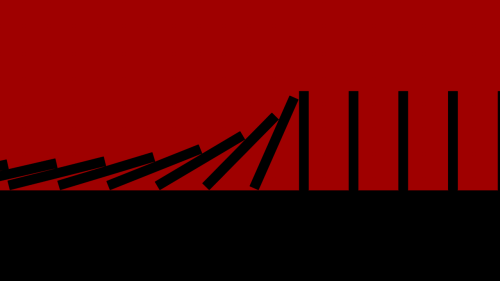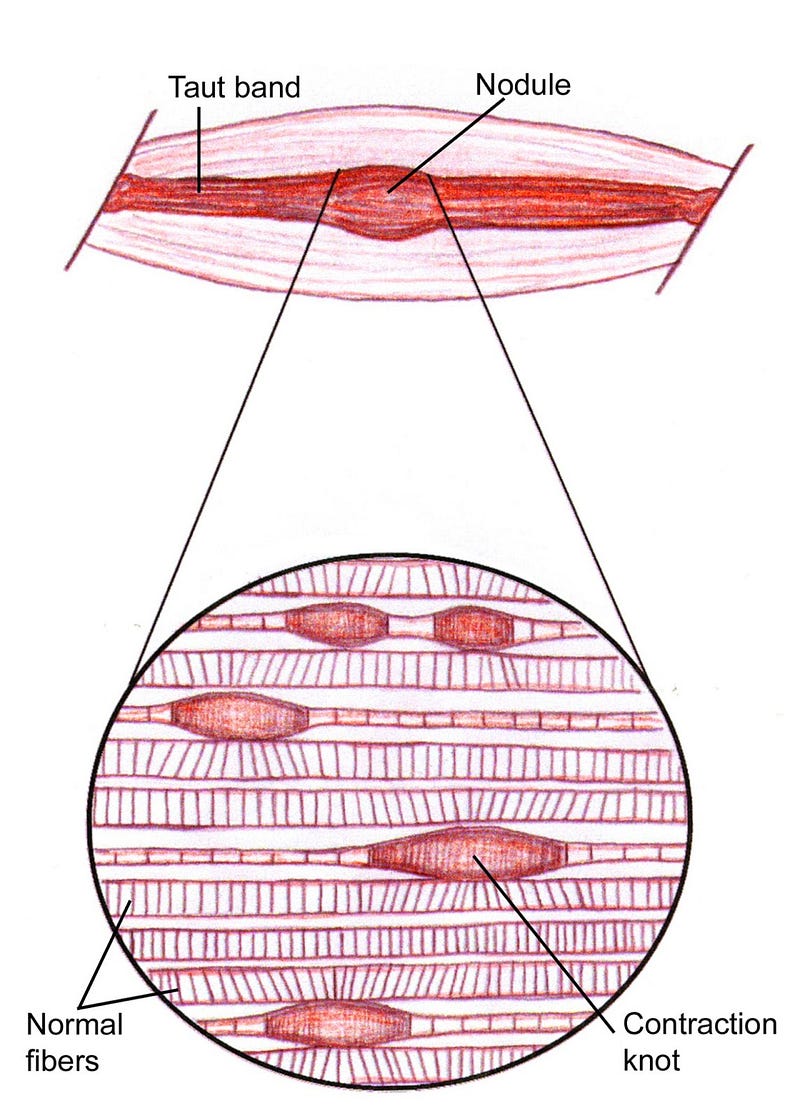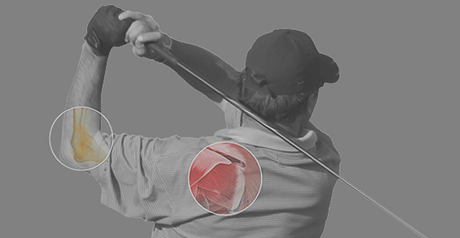
Trigger points are small knots in muscles, which cause pain where it originates or in a spot that may seem completely unconnected. Trigger points have been found to decrease the range of motion and cause muscles to fatigue more rapidly than they normally would.

For example, you may have a sharp pain in your elbow, but that pain may be caused by a trigger point in your shoulder blade. This pain is known as referred pain and comes from the nerves impacted by the underlying cause of your symptoms. You seek relief for the obvious elbow pain, but the cause of that pain is actually a weakness in your shoulder blade.

The origin of your pain is not always obvious. Pain shows up in one place, but the cause lies somewhere else that is not so obvious.
Working on transformation programmes with organisations, we identify “corporate trigger points”.
A senior leadership team may believe they have identified the source of stagnating performance and request that we manage the symptom which appears quite obvious to them. However, the cause of that symptom lies in an entirely different area. A great physiotherapist will find the cause of muscular pain, just as a change consultant will identify the true cause of organisational pain.
Identification of the problem is the easiest part, the real work comes next and that is the focus of this Thursday Thought.
Quick Fixes and Short Cuts
One season playing rugby I was constantly plagued by knee pain. My symptoms suggested that my pain was due to a problem with my knee, but the tight knee was due to tightness in my iliotibial band or ITB. The ITB runs along the side of your leg between your knee and your hip, it contributes to knee stabilisation. While the ITB was a contributing factor to my knee pain, it was still not the cause. In my case, the cause lay with a weakness in my gluteus medius, a muscle situated on the outer surface of the pelvis.
If I had not attended a very good physiotherapist, I would have taken anti-inflammatory tablets, which make the pain bearable, but only mask the true cause. Even if I had just stretched the ITB, it would alleviate the immediate pain but would provide only temporary respite from the true cause of the pain.
The point is that the symptom is not always the cause. This is very often the case when organisations experience problems.
A good change consultant — like a good doctor — will quickly diagnose the true cause of corporate pain. However, even when a consultant reports the findings back to a leadership team, sometimes the client may not want to deal with the true cause of their pain. They would rather mask the symptom — akin to taking an anti-inflammatory — rather than truly amending the source of the pain.
In our analogy, the cure for my own knee pain was ultimately a set of exercises to rehabilitate seemingly unrelated muscle groups. Building these muscles up would re-engage them and thus relieve the pressure on my ITB, in turn stabilising my knee.
In a similar vein, organisations may identify their symptom as one underperforming business unit, when the cause lies with how the rest of the organisation engage with that business unit. Following is a very concrete example. Digital media sales in traditional media organisations are still considered a threat. Even though the future of the organisation depends on their contribution, they are often ostracised. Traditional media sales teams, who have grown comfortable in their roles feel threatened by the new digital sales members. The residual power lies with the traditional media sales, who have hitherto sold their product at a premium until there was the choice of digital media. To uphold their sales levels during the financial downturn, (which coincided with the growth of digital media advertising) the traditional sales teams consistently attempted and often succeeded in bundling the digital product as an add-on to the traditional one. To make this more real, imagination this sale included a front-page newspaper advertisement for the usual premium price, with an added sweetener of a website homepage takeover thrown in for free. The traditional sales rep — not knowing the value of the digital product — acted like anyone who is compensated based on targets would do — and simply closed the deal. This, of course, is short-term thinking at the expense of long-term success. The media companies who succumbed to such practices are struggling hugely now as they grapple with digital sales skills.
To all intents and purposes, it appears like the traditional sales team are still performing well, while the digital sales struggle to gain traction. In reality, the agency who buys the advertising space will always opt for the bundled sale, as they are getting the digital elements thrown in for free.
Here is how it appears:
The symptom: poor digital sales results.
The apparent cause: an underperforming digital sales team.
The cause: the traditional sales team bundling digital ad units.
The cure: training the traditional team of the value of the digital product, overhauling the compensation packages for all sales representatives and merging the sales reps and their budgets.
When you are undergoing an organisational transformation programme, you must look at the cause and the effect., but we must equally examine the environment in which the organisation (organism) operates. The symptom is rarely the cause, but it will always inform you where you will find the cause.
Unfortunately, diagnosing the cause is the easy part. Lasting change only takes place when there is a true commitment to the cure. Even when an organisation invests in diagnosing trigger points, they often fail to implement the cure.
Adherence

Patient adherence to medication programmes is one of the huge issues in healthcare. One study showed 24% of patients who survive a heart attack don’t consistently take medications prescribed to prevent it from happening again. This is the case with many forms of illness from cancer to diabetes.
I was always struck by the fact that many people who receive a rehabilitation programme from a physiotherapist do not follow the programme even when it will give them permanent relief.
They opt for the pain of regret over the pain of discipline.
A friend of mine is a fitness instructor for high wealth individuals. He told me that many of his clients believe that paying for an instructor alone will get them results. They do not push themselves and do the hard work required to make a lasting change, whether that be weight loss, weight gain or just general fitness.
In a similar way, those who fast-track muscle gains with steroids will indeed get faster results, but will ultimately pay the price further down the road. Using steroids builds the muscle, but not the ligaments that support the muscle. Ligaments do not grow at the same pace as the muscle and this leads to ligament tears and other such serious injuries.
We live in a society of instant gratification and we demand instant results, but that is not how it works. You don’t build a house before first setting a foundation. To create and sustain lasting change is a long-term strategy, shortcuts simply do not work.
Organisations often like to announce a big transformation programme with an all-hands-on-deck town hall meeting. The CEO stands up and reads a speech and everyone has coffee and pastries. Everyone returns to their task, pumped up and enthusiastic, which lasts for maybe one or two weeks. This is what I call a corporate splash.

The alternative is a corporate ripple. This does involve the splash that causes the ripple, but the intent is much different. A corporate ripple begins by preparing the water, aligning the direction of the ripples, paving their way. Once the preparation work is complete, then comes the splash that ignites the ripple. The ripple must be sustained. With a powerful splash and a sustained ripple, that ripple can become a crashing wave.
That is when the change comes.
THANKS FOR READING, MORE EVERY THURSDAY AND ARCHIVE HERE:
The Innovation show this week is:
EP 136: Even Eagles Need a Push: Learning to Soar in a Changing World with thought leader, speaker and bestselling author David McNally
Discover your strengths, live your dreams! Let go of fear. Discover your true sense of purpose. Live the life you’ve only imagined!
Maximise your creative potential. Find success with dignity. Deal with personal crises.
Why does the thrill of soaring begin with the fear of falling?
How can you overcome that fear and dare to live?
Today’s guest shares some solutions. He has spent over 30 years working with leaders aligning their organisations to inspire individuals, teams, and hundreds, even thousands of people in various settings. He has captured his insights as an entrepreneur, speaker, author and film producer to share the powerful transformation that occurs when people share a common purpose. He has discovered that the key to real growth and profitability is purposeful leaders who build inspiring organisations and iconic brands. His mission is straightforward and clear: To provide people with the knowledge, skills and inspiration to perform at their best.
He is the author of the bestselling books, The Eagle’s Secret– Success Strategies for Thriving at Work and in Life, The Push — Unleashing the Power of Encouragement, My Sacred Journey Through Cancer.
His co-authored book, Be Your Own Brand, also a bestseller, is in its second edition and is now used by many business schools to address the importance of building a strong personal brand.
His latest book is “Mark of an Eagle — How Your Life Changes the World”, which was released last year. It is the third in the eagle trilogy.
Also, an award-winning producer, he has produced two highly praised, inspirational films, The Power of Purpose and If I Were Brave.
The focus for this episode is his bestseller “Even Eagles Need a Push: Learning to Soar in a Changing World”
We welcome David McNally.
We talk:
- Confidence
- Overcoming setbacks
- Thinking
- The Inner Critic
- Goals
- Purpose
- Mission
- Contribution
- Forgiveness
- Vision
- Commitment
- Legacy
Have a listen:
Soundcloud https://lnkd.in/gBbTTuF
Spotify http://spoti.fi/2rXnAF4
iTunes https://apple.co/2gFvFbO
Tunein http://bit.ly/2rRwDad
More about David here: